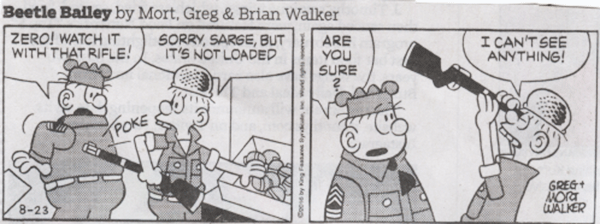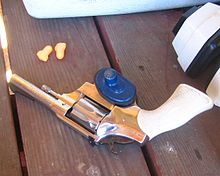Richard Pleines - Gunsmith - CT
Specializing in the Repair and Restoration of Antique, Military and Older Curio & Relic (C & R) Firearms
We Purchase Individual Firearms, Collections, and Estates with an Eye Toward Classic Firearms that are Candidates for Restortation
Buy - Sell - Appraise
Located in Killingworth, Connecticut - By Appointment
Only - 860 663-2214
Gun Safety Should be a Mindset

Gun safety training seeks to instill a certain mindset and appropriate habits by following specific rules. The mindset is that firearms are inherently dangerous and must always be stored carefully and handled with care. Handlers are taught to treat firearms with respect for their destructive capabilities, and strongly discouraged from playing or toying with firearms, a common cause of accidents.
The rules of gun safety follow from this mindset. There are many variations, and one of them is the Four Rules introduced by Colonel Jeff Cooper, which are:
-
All guns are always loaded.
-
Never let the muzzle cover anything you are not willing to destroy.
-
Keep your finger off the trigger until your sights are on the target.
-
Be sure of your target and what is beyond it.
The NRA provides a similar set of rules
- ALWAYS keep the gun pointed in a safe direction.
- ALWAYS keep your finger off the trigger until ready to shoot.
- ALWAYS keep the gun unloaded until ready to use.
The Canadian Firearms Program uses the concept of The Four Firearm ACTS:
- Assume every firearm is loaded.
- Control the muzzle direction at all times.
- Trigger finger off trigger and out of trigger guard.
- See that the firearm is unloaded. PROVE it safe.
For Firearms not in use
Gun safety for situations where firearms are not in use is intended to prevent access to and subsequent discharge of a firearm. Preventing access to firearms can serve a double purpose in that it can also protect the firearm from theft.
Gun safes
A gun safe or gun cabinet is commonly used to physically prevent access to a firearm. These have the primary purpose of preventing theft
Disassembly
Access to a functioning firearm can be prevented by keeping the firearm disassembled and the parts stored at separate locations. Ammunition should also be stored away from the firearm. Sometimes, this rule is codified in law. For example, Swedish law requires owners of firearms either to store the entire firearm in a safe or lockable gun rack, or to lock the "vital piece" (bolt, etc.) away in a safe place.
Locks

![]()
Trigger lock fitted to the trigger of a revolver.
There are several types of locks that serve to make it difficult to discharge a firearm. Locks are considered less effective than keeping firearms stored in a lockable safe since locks are more easily defeated than approved safes. After stealing a locked firearm, a thief can bypass the lock at their leisure.
-
Trigger locks
There is controversy surrounding manufacturing standards, usage, and legislation of trigger locks. While supporters of trigger locks argue that they will save children from dying in gun accidents, critics point to demonstrations that some models can be removed by children with very little force and common household tools. Many firearms can go off if the gun is dropped. It is important to make sure to look for firearms that fully disengage the hammer when the safety is put on. A former senior product manager at Master Lock, a trigger lock manufacturer, was quoted as saying “If you put a trigger lock on any loaded gun, you are making the gun more dangerous.” Critics also point out that a trigger lock will increase the time it takes a gun owner to respond to a self-defense emergency. In 2008, the U.S. Supreme Court overturned a Washington, D.C. law that required handguns to be locked or otherwise kept inoperative within the home, saying that this makes it impossible for citizens to use them for the core lawful purpose of self-defense.
Although there are no universal standards for the design or testing of trigger locks, some jurisdictions, such as the state of California, maintain a list of approved trigger lock devices.In Canada, a trigger lock is one of the methods prescribed by law to secure a firearm during transport or storage.
- Cable locks
Cable locks are a popular type of chamber lock that usually threads through the breech and ejection port of repeating-action firearms; they generally prevent full cycling of the action, especially preventing a return to "battery", with the breech fully closed. In many designs of pistol and rifle, they also prevent the proper insertion of a magazine.
California effected regulations in 2000 that forced gun locks to be approved by a firearm safety device laboratory via California Penal Code Section 12088. All gun locks under this code must receive extensive tests including saw, pick, pull, and many other tests in order to be approved for the state of California.
Open bolt indicator
Shooting ranges may require that firearms not in use have the bolt, slide or (in case of revolvers) cylinder locked open to expose the firing chamber as empty. In addition, an open bolt indicator, such as a yellow safety flag may be inserted in the barrel (needed if the firearm design lacks a mechanical hold-open device). This is particularly important when shooters go down range to set up, score or remove targets.
Children
Children who are generally considered too young to be allowed to handle firearms at all can be taught a different set of rules:
- Stop.
- Don't touch.
- Leave the area.
- Tell an adult.
The purpose of these rules is to prevent children from inadvertently handling firearms. These rules are part of the Eddie Eagle program developed by the NRA for preschoolers through 6th graders.
Whether programs like Eddie Eagle are effective has not been conclusively determined. Some studies published in peer-reviewed journals have shown that it is very difficult for young children to control their curiosity even when they have been taught not to touch firearms. Gun access is also a major risk factor for youth suicide. The American Academy of Pediatrics (AAP) advises that keeping a gun in the home, especially a handgun increases the risk of injury and death for children and youth in the home. If families do keep a gun in the home, the AAP advises keeping it unloaded and locked up, with the ammunition locked in a separate location, and the keys to the locked boxes hidden.
Polling shows that over half of parents who do not own a gun have never talked with their children age 5-17 about gun safety.The ASK Campaign (Asking Saves Kids) is based on the fact that many families with children have a gun, and almost half these guns are left unlocked or loaded. The ASK Campaign urges parents to ask their friends, neighbors and family members if they have a gun in the home before sending their children over to play.
Older youth (age may vary per program) may take part in a program for safe rifle handling, such as the ones promoted by these organizations: